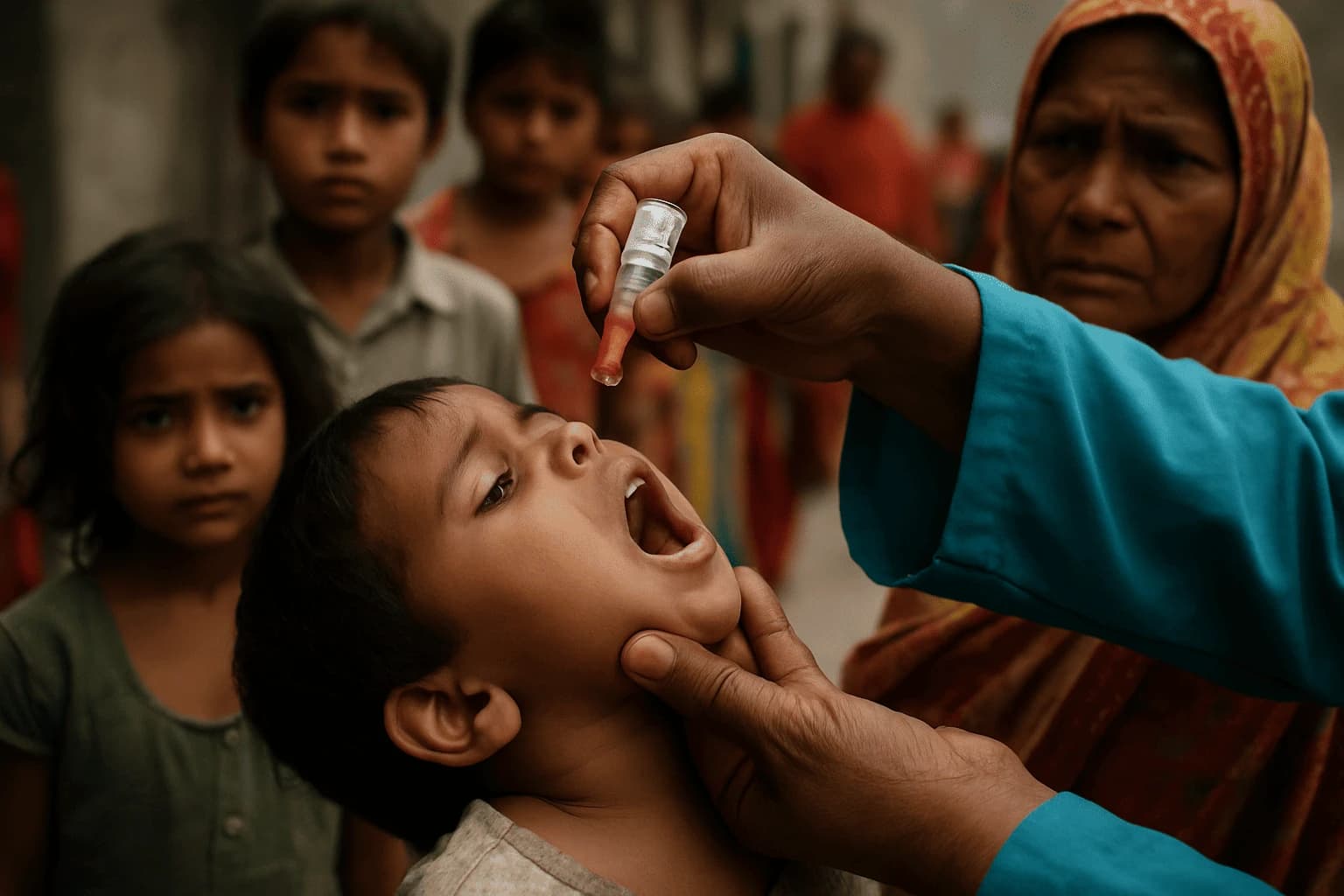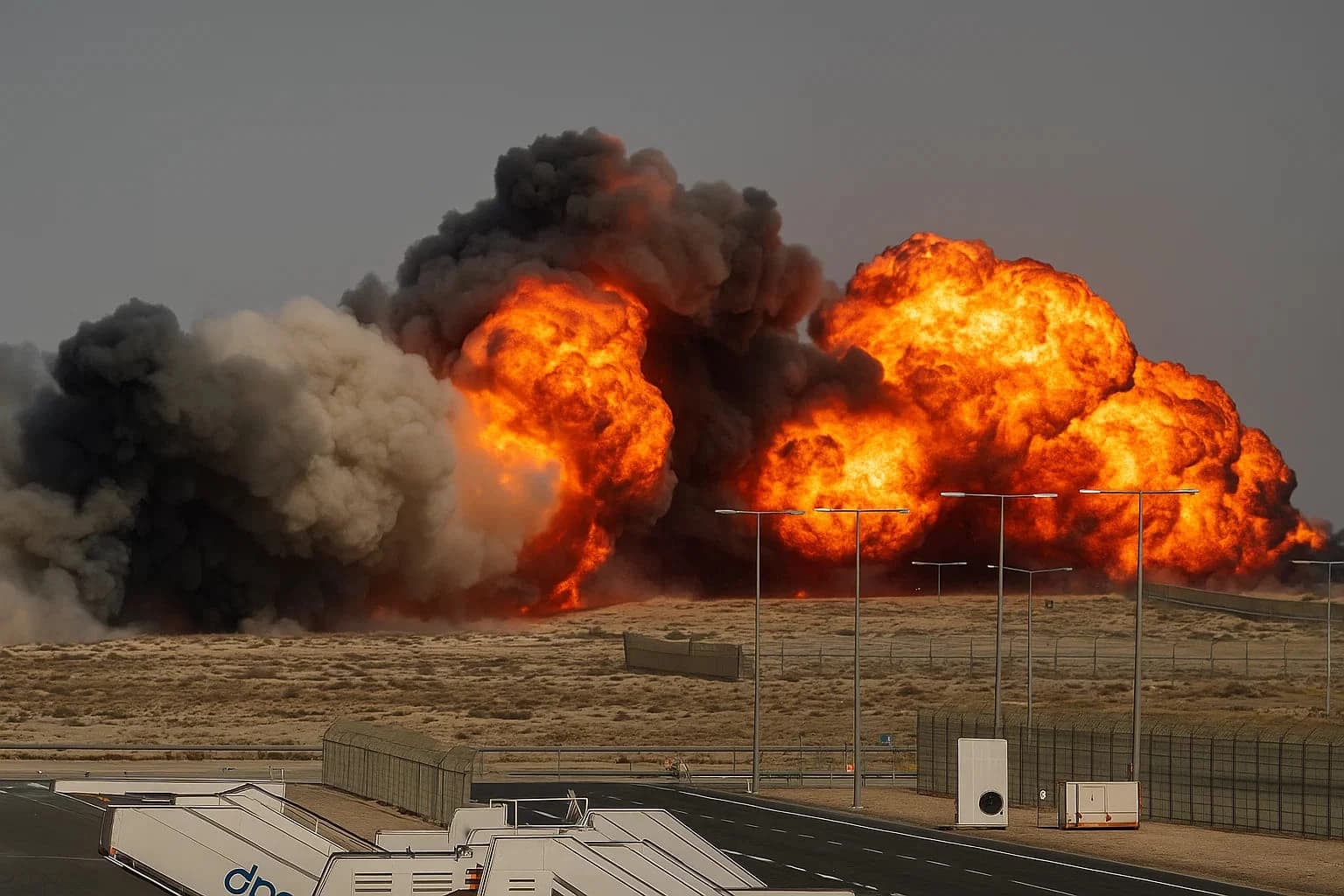© 2025 Roz UpdatesbyTETRA SEVEN

* All product/brand names, logos, and trademarks are property of their respective owners.
Despite billions in funding and decades of effort, the world remains short of its goal to eradicate polio with troubling gaps in strategy, surveillance, and trust continuing to stall progress.
More than 35 years after the launch of the Global Polio Eradication Initiative (GPEI), the virus remains entrenched in a few key regions most notably Pakistan and Afghanistan. According to the World Health Organization (WHO), while wild poliovirus cases are now rare, the recent surge in vaccine derived poliovirus (cVDPV) is complicating eradication efforts, with outbreaks now reported in over 30 countries.
Health experts say the ongoing transmission highlights serious vulnerabilities in the global campaign, from outdated vaccination strategies to deep rooted distrust in public health authorities.
“Polio’s persistence is no longer just a scientific problem, it’s a systemic one,” said a WHO regional officer who requested anonymity due to the sensitivity of ongoing evaluations.
The oral polio vaccine (OPV), once considered a breakthrough for its affordability and ease of delivery, is now under scrutiny for its rare ability to mutate in under-immunized communities sparking new outbreaks in areas previously polio-free.
Compounding the problem are operational failures, such as falsified vaccination records, unreliable cold chain systems, and security challenges in conflict-prone areas. In Pakistan, health workers many of them women continue to face threats, with several incidents reported this year alone.
Meanwhile, global attention has waned. With COVID-19 shifting public health priorities and funding, the polio program is grappling with a crisis of urgency and accountability.
This article explores the key reasons polio continues to evade eradication, shedding light on overlooked gaps in global strategy, local implementation failures, and the future of one of the world’s longest running health campaigns.
Despite monumental progress, polio remains a global threat and in some ways, it has evolved into a more complex challenge than ever before.
For decades, the oral polio vaccine (OPV) has been the cornerstone of eradication efforts. It’s inexpensive, easy to administer, and provides community level immunity through person-to-person contact. But its effectiveness comes with a critical drawback: in rare cases, the weakened virus in OPV can mutate in under immunized populations, leading to outbreaks of circulating vaccine derived poliovirus (cVDPV).
In contrast, the inactivated polio vaccine (IPV) used widely in wealthier nations contains no live virus and cannot cause cVDPV. However, it is costlier, requires trained medical staff for injection, and does not provide the same level of intestinal immunity, which is crucial for stopping transmission.
This has left global health authorities in a difficult position. The very vaccine that helped reduce polio cases by over 99% is now part of the reason it continues to resurface in some regions.
Recent data paints a worrying picture. In 2024 alone, cVDPV outbreaks were reported in more than two dozen countries, including the Democratic Republic of Congo, Yemen, and the Philippines. In many cases, these outbreaks occurred in areas with low vaccination coverage, fragile health systems, or ongoing conflict.
In Pakistan and Afghanistan the last two countries where wild poliovirus is still endemic cVDPV has emerged as an additional threat, further complicating eradication efforts. Experts warn that without a shift in vaccine strategy and more targeted delivery in high-risk areas, new outbreaks could continue for years.
The challenge now is balancing the need for broad, fast coverage with the long-term risks of using OPV. While some countries are transitioning to novel oral vaccines (nOPV2) designed to reduce mutation risk, rollout has been uneven and hindered by logistical issues.
Polio may no longer dominate headlines, but for many global health workers, it remains a ticking time bomb one that threatens to undo decades of progress unless urgent reforms are made.
As global agencies race to stamp out the last traces of polio, growing evidence suggests that systemic failures not just viral resistance are standing in the way. From data manipulation to deadly misinformation campaigns, the cracks in the machinery of global health efforts are becoming impossible to ignore.
In high risk areas like Pakistan and Afghanistan, falsified vaccination data has distorted progress and misdirected resources, leaving children vulnerable to infection. Cold chain failures and misused polio program funds further weaken the campaign, highlighting the urgent need for transparency and operational reform in global polio eradication efforts.
Polio Eradication Faces Socio-Political Barriers in High-Risk Regions
In polio-endemic areas like Pakistan, Nigeria, and parts of the Middle East, vaccine hesitancy stems from deep rooted mistrust, historical neglect, and misinformation such as rumors linking the polio vaccine to infertility or Western agendas. Spread through social media and religious rhetoric, these fears have led to refusals and violence against health workers, particularly women. In Pakistan, multiple polio team members have been killed, prompting armed escorts for vaccinators and increasing operational costs. These challenges highlight that polio eradication is not just a medical mission it’s a socio-political crisis requiring trust-building, accountability, and stronger local engagement.
While global attention focuses on polio outbreaks, several vital aspects of the eradication campaign remain underreported including environmental surveillance and the role of female health workers.
In many high-risk regions, sewage testing has become a critical tool, detecting poliovirus in areas without reported cases. This form of silent surveillance is especially important for locating “zero-dose” children those who have never received any vaccine doses often in conflict-affected or remote areas.
In conservative communities, female vaccinators lead door-to-door efforts, often risking their safety to deliver vaccines and build trust. Despite their vital role, they receive little recognition or protection support for them could be key to ending polio.
To finish the fight against polio, experts say the focus must shift from short-term campaigns to long-term health system strengthening. Transitioning polio infrastructure into routine care, improving data integrity, and investing in new vaccine technologies are key.
Equally vital is supporting local health workers, especially women, and addressing mistrust through community-led education. Without these changes, the virus will continue to exploit the same gaps it has for decades.
More than three decades after the world set out to eradicate polio, the virus still lingers not because the tools don’t exist, but because of persistent gaps in strategy, trust, and accountability.
From vaccine-derived outbreaks to falsified data and community resistance, the global campaign has been challenged in ways that science alone can’t solve. Yet hope remains — through smarter surveillance, stronger local leadership, and renewed focus on equity.
Polio can still be defeated. But it will take more than vaccines, it will take transparency, innovation, and trust where it matters most.

22 November 2025

18 November 2025
No comments yet. Be the first to comment!